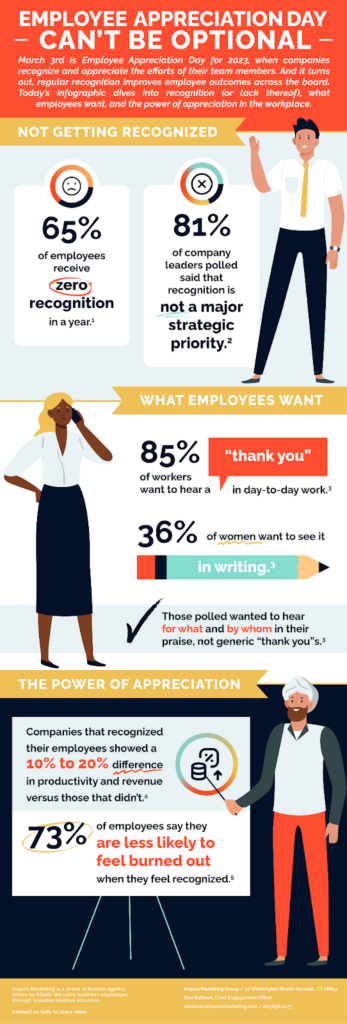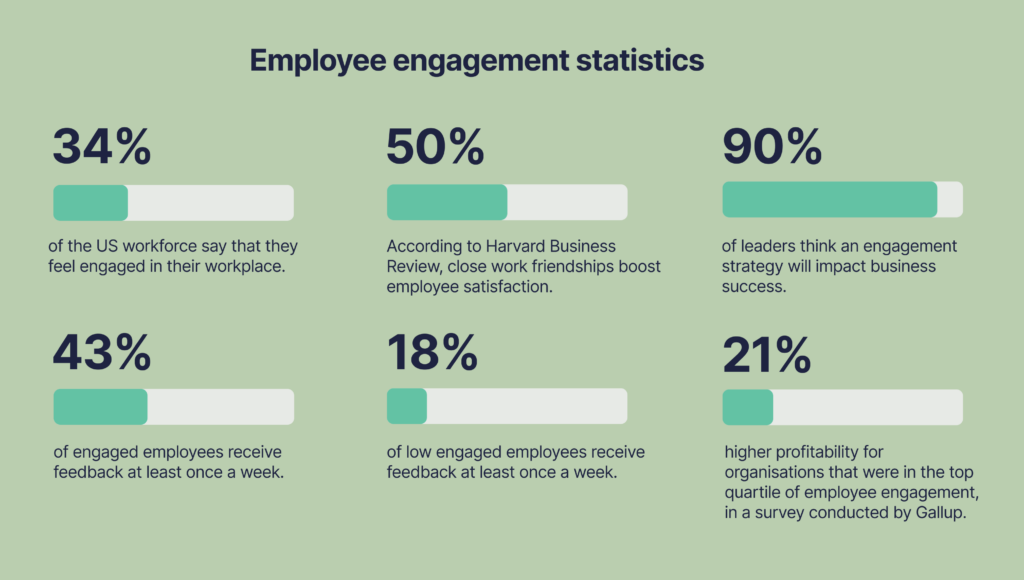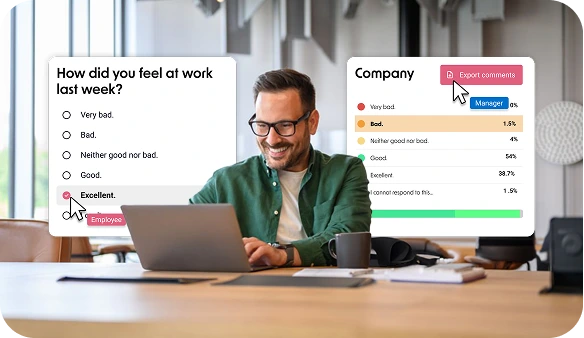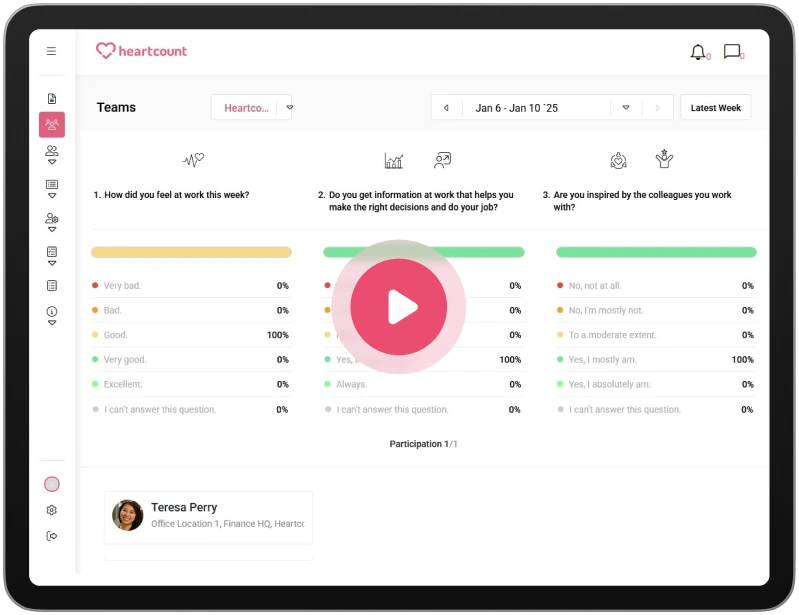What is Recognition in the Workplace and Why It Matters

Acknowledging employees’ efforts at work is crucial for every organization. A good employee recognition program boosts engagement, drives performance, and fosters a positive company culture.
By implementing effective recognition practices, you can significantly improve overall workplace morale and productivity, ultimately leading to greater organizational success.
Acknowledging employees’ efforts at work is crucial for every organization. A good employee recognition program boosts engagement, drives performance, and fosters a positive company culture.
By implementing effective recognition practices, you can significantly improve overall workplace morale and productivity, ultimately leading to greater organizational success.
What is Recognition in the Workplace?
Recognition in the workplace means acknowledging and valuing employees’ efforts, achievements, and contributions.

Source: https://inspiramarketing.com/infographic-employee-appreciation-day-is-not-optional/
You can do this in many different forms — from verbal praise and public kudos to more structured rewards like bonuses and promotions. The main idea is to make employees feel valued and appreciated for their hard work. This will, in turn, motivate them to keep performing well and stay loyal to your company.
Employee recognition can sometimes be as simple as saying – thank you.
However, it takes consistent and careful efforts to acknowledge contributions that align with the company’s goals and values.
But no matter what, recognizing these efforts is key to encouraging a motivated workforce and improving the employee experience.
The Importance of Employee Recognition
According to Happeo, 92% of employees believe recognizing their accomplishments is very important. However, sadly, 65% receive zero recognition in a span of a year!
Recognizing employees is essential for several reasons:
1. Increases morale. Timely recognition makes employees feel valued and motivated to maintain or improve their performance. By creating a culture with a higher level of job satisfaction and morale, you can reduce stress and burnout.
2. Increases engagement. When you show appreciation for your employees’ efforts, you can significantly increase their level of engagement. According to Workhuman, employees who feel valued are twice as likely to be more engaged. By fostering this sense of appreciation, you also cultivate greater commitment and loyalty to your company.

Source: https://www.happeo.com/blog/employee-statistics-you-need-to-know
3. Reduces turnover. Implementing an employee recognition program can lower voluntary turnover by 31%. By reducing turnover, you save on hiring and training costs and retain valuable talent within your organization.
4. Improves company culture. By fostering a culture of appreciation, you can create a positive and supportive work environment. Encouraging employees to recognize and support each other boosts morale and enhances teamwork and collaboration, driving collective success.
5. Drives performance. When you recognize your employees’ hard work, they’re motivated to strive for excellence. For example, you can provide regular feedback on influence of their work and celebrate your team’s achievements to reward their efforts. This way you’re giving them the sense of meaningful work, and you’re inspiring them to work harder and improve overall performance and productivity within the company.
6. Promotes loyalty. Employees who feel valued and recognized are more likely to develop loyalty to your company. Implementing employee recognition software can also streamline the process, making giving timely and meaningful recognition easy. By consistently valuing and recognizing your team, you can build a more stable and committed workforce, which is essential for long-term success.
Types of Employee Recognition
Different ways exist to recognize a team’s achievements. Knowing these can help you build a recognition program that works for everyone.
1. Informal recognition. Start practicing small gestures like a thank you, sending an email of appreciation, or giving a shout-out in a team meeting are vital. You can give these immediately and frequently, reinforcing good behavior. By incorporating these practices, you can strengthen your team’s positive actions and create a supportive work environment.
2. Formal recognition. You can implement structured initiatives like employee of the month awards, annual recognition events, and milestone celebrations and create a public platform for celebrating achievements. By organizing these events, you can highly motivate your team and demonstrate your commitment to recognizing and valuing their contributions.
With the HeartCount Peer recognition feature, employees can send and receive kudos that are visible to everyone in the company.

This feature provides valuable data and insights not only to continuously improve your peer recognition program but also for individual monitoring of employees with the highest and lowest number of praises.
Metrics you can track include:
- the number of praises sent and received,
- the number of active leaders,
- activation rate, and
- trends in upticks or losses.
“I think every employee wants to be motivated. The underlying human principle is that everyone wants to be successful. (…) It’s up to the leader, their business manager, or the line manager to take out the best of the employee through the line of work that they are doing.”
Dr. Athina Kanioura, Chief Strategy and Transformation Officer at PepsiCo
3. Financial appreciation. Start awarding bonuses, gift cards, and raises, but make sure these rewards are part of a broader recognition strategy that includes non-monetary recognition as well. By balancing financial incentives with personal gestures, you can create a comprehensive approach to employee appreciation that addresses diverse motivations and fosters a more engaged and loyal workforce.
4. Non-financial recognition. You can offer extra time off, flexible hours, opportunities for job growth, and symbolic rewards like certificates and trophies. These types of appreciation can be powerful as they often lead to personal and professional growth. By implementing non-financial recognition, you can cater to your team’s diverse needs and aspirations, enhancing their overall satisfaction and engagement.
5. Peer recognition. Build a sense of community and friendship among team members with peer-nominated awards, appreciation boards, or social media shout-outs. By encouraging peer recognition, you can foster a supportive and collaborative work environment where employees feel valued by their colleagues.
6. Managerial recognition. With 28% of employees stating the most memorable recognition comes from their direct manager, managers need to be trained in recognizing and rewarding their teams regularly. By equipping managers with the skills to offer meaningful appreciation, you can enhance the impact of recognition and boost overall team morale.
How to Create a Successful Employee Recognition Program
A good employee recognition program aligns with your company’s goals and values.
Here are some ideas on how to build one:
- Define Goals
Setting clear objectives for your recognition program is the first step toward success.
No matter if your goals include improving employee engagement, increasing retention, or boosting productivity, having defined goals will guide your efforts and help measure success.
Consider conducting a baseline survey to better understand current levels of employee satisfaction and engagement. This data can help you find areas where recognition is most needed and track the program’s impact over time.
With HeartCount, you can create custom surveys tailored to your organization’s needs. You can define the types of questions, recipients, and the timing for sending. Each custom survey can be saved as a template for future use.

- Align it With Company Values
Your recognition program should reflect your company’s core values. Recognizing behaviors and achievements embodies these values. It shows what’s important to your organization and helps embed them into your company culture.
Let’s take innovation as a core value, for example. You can create awards that celebrate creative problem-solving or new ideas. If teamwork is essential, recognize collaborative efforts and successful team projects. By linking recognition to values, you ensure the program supports broader organizational goals. It also helps strengthen the desired culture.
- Involve Employees
Involving employees in creating and implementing the program is key to its success. You can gather feedback through surveys, focus groups, or suggestion boxes to understand what types of recognition are most meaningful to them.
Creating an employee advisory committee can also be beneficial. The committee can provide ongoing feedback and suggestions, helping to ensure the program stays relevant and effective. Involving employees ensures the program meets their needs, but it also boosts buy-in and participation.
- Track the Effectiveness
Continuously monitoring and evaluating your recognition program is essential. Use metrics such as:
- Employee satisfaction surveys
- Engagement scores
- Retention rates, and
- Productivity levels
Regularly review the data to identify trends and areas for improvement. For example, if engagement scores are not improving, consider holding focus groups. Do this to gather more detailed feedback and make needed changes. Tracking your program’s effectiveness ensures it stays relevant. It also ensures it keeps delivering the desired outcomes.
COLLECT
Employee Recognition Ideas
Implementing diverse recognition methods keeps the program engaging and effective.
Here are some recognition in the workplace ideas:
Celebrating Milestones
Celebrating milestones—from significant work anniversaries and project completions to personal milestones—shows appreciation for employees’ dedication and hard work.
For example, you can create a milestone recognition program.
It could include personalized certificates, public announcements, and small gifts for employees reaching specific tenure milestones. Project completion celebrations can also include team lunches. The team might also be recognized in company newsletters or get bonus days off.
Peer-to-Peer Recognition
Peer recognition programs empower employees, so encourage your team to praise each other. These programs help employees appreciate their colleagues, fostering a supportive team environment.
You can use systems like “kudos boards“ where employees post notes of appreciation. Or, they can use digital platforms to give virtual badges or points. Recognizing peer nominations during company meetings can also validate this form and show the importance of the nominations.
Public Recognition in Meetings
Praising employees in meetings shows their contributions to peers and senior leaders. This will undoubtedly amplify the recognition’s impact.
You should regularly set aside time in meetings to recognize outstanding achievements. This can be done through presentations, shout-outs, or storytelling sessions. Give your employees a chance to share their success stories. This will boost the employee’s morale and set a positive example for others.
Company Newsletters
Feature outstanding employees and their achievements in company newsletters. This recognizes the individual and communicates a culture of appreciation throughout the organization.
Highlight achievements and project successes in a special newsletter section. Adding photos and personal quotes can make these features more engaging and personal.
Awards
Start award systems for various achievements such as innovation, teamwork, and leadership. Regular awards ceremonies can create a sense of anticipation and excitement around recognition.
Consider creating different categories of awards to recognize various aspects of performance. For instance, you could have:
- Innovator of the Year
- Team Player of the Month
- Leadership Excellence Award
Hosting an annual awards ceremony can make the recognition more memorable and prestigious.
Personalized Thank-You Notes
A handwritten thank-you note can be a powerful gesture of appreciation. Personalizing the message makes it more meaningful and memorable for the recipient.
Encourage managers and team leaders to write and send personalized thank-you notes often. Highlight specific actions or achievements to show genuine recognition and gratitude. This small, but thoughtful gesture can have a big impact on employee motivation.
Successful Employee Recognition Examples
Take a look at a few real-life examples to inspire and guide your program:
1. Google is known for its innovative recognition programs. They use peer-to-peer recognition and let employees honor each other with public praise and small rewards. They have a platform called gThanks, where they can give each other public recognition and reward points.
Moreover, they can redeem the points for various benefits. They also runed Google Open Source Peer Bonus that awarded and praised biggest contributors on their open source projects.
As a company recognized for its care for employees, Google has retention rate 90% and was ranked 6th in the Fortune 100 Best Companies to Work.
2. Southwest Airlines celebrates employees with events and personalized thank-you notes from executives. Moreover, they also practice public recognition during company meetings. Their Winning Spirit platform includes on-the-spot recognition and milestone celebrations. They also have an annual awards banquet.
As a result their employees feel valued and appreciated. The company has more that 45 000 employees and has achieved the #1 ranking in the U.S. DOT’s Top Ranking in Customer Satisfaction.
3. Zappos powerful recognition program includes financial rewards, peer recognition, and public acknowledgment. It aligns with their core values of fun and a little weirdness. Their system, Zollars, allows employees to earn and spend on rewards like gift cards and experiences. Zappos also hosts recognition events, where employees are publicly praised for their contributions.
Thanks to its amazing company culture, Zappos’ call center retain 10-25% more employees than the average for the same position in other company.
The Bottom Line
Creating a culture of recognition is key for the success and well-being of employees and the organization. Workplace recognition is a strong motivator that builds loyalty and bonds employees and the organization. Setting up a good employee recognition program requires little effort, but, it brings huge benefits in engagement, satisfaction, and performance.
By continuously evaluating and changing your recognition strategies, you can ensure success that will lead to a thriving company culture. Check out more ideas that can help you in improving your organizational culture.









